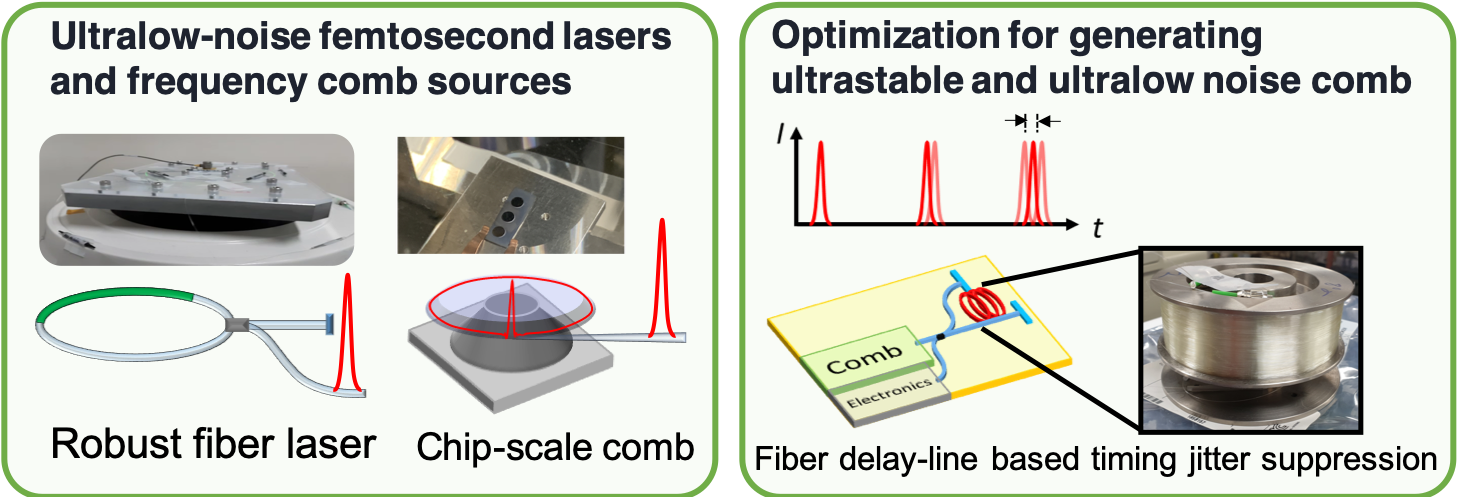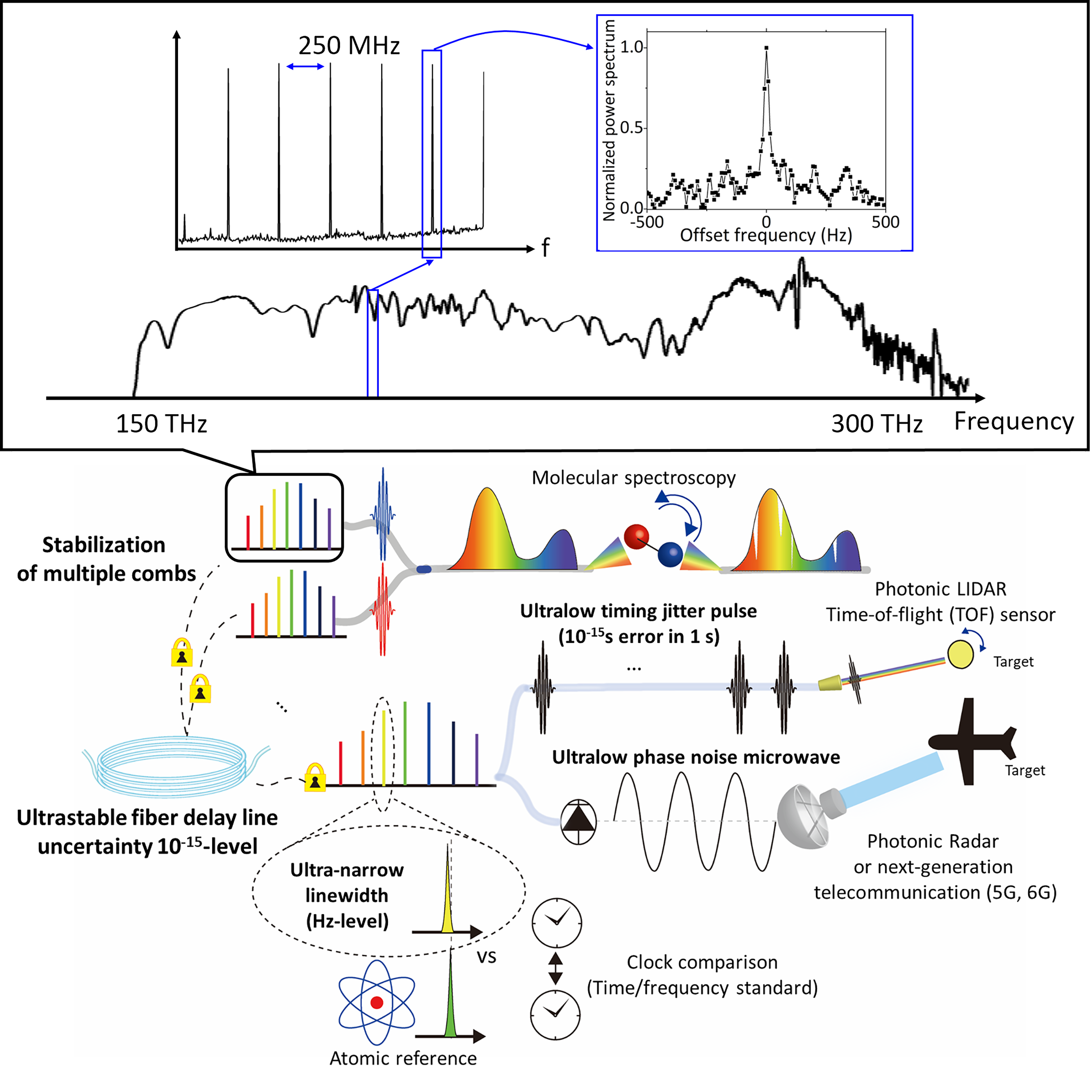
|
Ultra-low-noise fiber and on-chip frequency combs and all-fiber-photonic laser stabilization
The availability of signal sources with extremely low timing jitter and phase noise enables new scientific and industrial applications. By inventing ultra-sensitive timing detection methods and understanding the impacts of pulse dynamics on timing jitter in fiber lasers, we showed that passively mode-locked fiber lasers can generate attosecond-level timing jitter for the first time [1,2]: this result was also featured in Research Highlights of February 2012 issue of Nature Photonics. Our works on low-noise mode-locked fiber lasers have been highly cited, widely adopted by other researchers, and internationally renowned. In 2016, we contributed an invited article on ultralow-noise mode-locked fiber lasers for OSA's prestigious review journal Advances in Optics and Photonics [3], highlighting our leading position in low-noise mode-locked lasers and their applications. In January 2020, this paper was also selected as the top 1% cited paper in physics ("Highly Cited Paper (HCP)") from the Web of Science. More recently, we have expanded low-noise frequency comb study into the chip-scale microresonator-based combs (micro-combs). We could demonstrate the lowest-jitter micro-comb to date with only 2.6-fs timing jitter at 22-GHz repetition rate, which approaches the theoretical quantum limit [4].
Frequency-stabilized combs are important for achieving the ultimate performance of comb-based systems. Although ultrastable cavity-based stabilization methods have enabled sub-10-15-level instability, they are alignment-sensitive, expensive and complex systems, and their use has been mostly confined in advanced metrology laboratories. As an alternative, we have pioneered an all-fiber-photonics-based stabilization methods for frequency combs by using an optical fiber delay as both an ultrastable timing reference and a high-sensitivity frequency discriminator. It could achieve 10-15-level frequency instability, and was also used as a broadband dual-comb spectroscopy source with Hz-level linewidth [5]. It was also used for the timing stabilization of a chip-scale micro-comb, resulting in a compact palm-sized footprint for generating ultrastable optical pulses and microwaves [6]. Most recently, we showed a ultra-compact and vibration-insensitive module for stabilizing both CW lasers and frequency combs, which is highly suitable for field applications [7].


Related Publications
[1] Y. Song, C. Kim, K. Jung, H. Kim, and J. Kim, "Timing jitter optimization of mode-locked Yb-fiber lasers toward the attosecond regime," Opt. Express 19, 14518 (2011) 
[2] T. K. Kim, Y. Song, K. Jung, C. Kim, H. Kim, C. H. Nam, and J. Kim, "Sub-100-as timing jitter optical pulse trains from mode-locked Er-fiber lasers," Opt. Lett. 36, 4443 (2011) 
[3] J. Kim and Y. Song, "Ultralow-noise mode-locked fiber lasers and frequency combs: principles, status and applications," Adv. Opt. Photon. 8, 465-540 (2016) 
[4] D. Jeong, D. Kwon, I. Jeon, I. H. Do, J. Kim, H. Lee, "Ultralow jitter silica microcomb," Optica 7, 1108 (2020)
[5] D. Kwon, I. Jeon, W. Lee, M. Heo, and J. Kim, "Generation of multiple ultra-stable optical frequency combs from an all-fiber photonic platform," Science Advances 6, eaax4457 (2020)
[6] D. Kwon, D. Jeong, I. Jeon, H. Lee, and J. Kim, "Ultrastable microwave and soliton-pulse generation from fibre-photonic-stabilized microcombs," Nature Communications 13, 381 (2022) 
[7] I. Jeon, I. Jeon, C. Ahn. C. Kim, S. Park, W. Jeon, L. Duan, and J. Kim, "Palm-sized, vibration-insensitive and vacuum-free all-fiber-photonic module for 10-14-level stabilization of CW lasers and frequency combs," APL Photonics 8, 120804 (2023) 
|
|
|


